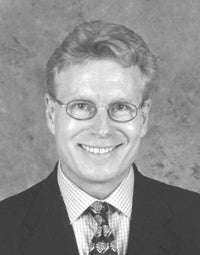Push for ‘school prayer’ is power struggle
Published 4:00 pm Saturday, February 22, 2014
Column: Inside the First Amendment, by
Push for ‘school prayer’ is power struggle
Never say die.
That must be the motto of politicians, religious leaders and school leaders who keep pushing for state-sponsored prayers in public schools more than 50 years after the Supreme Court struck down the practice as a violation of the Establishment clause of the First Amendment.
The latest prayer restoration scheme comes from an Alabama state representative who proposed a law last week that would require teachers to read a prayer from the Congressional Record every day to students in Alabama classrooms.
Nice try, but still unconstitutional: Whatever the source of the prayers, the high court has made it clear time and again that school officials may not impose devotional practices on a captive audience of impressionable young people in public schools.
A more common end run around the First Amendment is when school officials select students to deliver a prayer. Last year, a South Carolina school district included two Christian prayers in the elementary school graduation program, both delivered by students. To make matters even more constitutionally complex, the ceremony was held in a church.
Meanwhile in Kansas, a school board voted recently to allow students to recite prayers over the loudspeaker before football games — a practice still found in many school districts despite a 1990 Supreme Court decision that explicitly bans school-organized prayers at ballgames (Santa Fe Independent School District v. Doe).
School-sponsored prayers remain school-sponsored prayers — even if offered by students. Under current law, only if students are selected by neutral criteria and given primary control over the content of their speech can their religious (or nonreligious) expression be allowed at school-sponsored events.
Notice that school officials in South Carolina and Kansas aren’t giving students a “free speech” platform to say whatever they want to say. Instead, students are picked to pray prayers organized and reviewed by school officials.
If you view brief prayers in the morning, at the football game, or during graduation as harmless, then you probably agree with the federal district judge in South Carolina who described the complaint about graduation prayer as making a “mountain out of a molehill.”
But look beyond the 60-second prayers and consider the serious threat to religious freedom that can occur when school officials take sides in religion.
Consider, for example, the lawsuit filed in Louisiana last month alleging pervasive promotion of religion by teachers and administrators in Sabine Parish public schools. According to the complaint, teachers denigrate non-Christian beliefs, lead students in Christian prayers, promote Christian teachings in the classroom and, in other ways, turn the local school into the local church.
What’s happening in Sabine Parish is what would likely happen in many school districts in Alabama, Kansas, South Carolina and other places if people of the majority faith in those communities thought they could get away with it.
That’s because the push for “school prayer” isn’t really about restoring the power to pray; it’s about restoring the power of the majority to impose their prayers on the children of the minority in public schools.
If these fights and lawsuits were only about the right of kids to pray in school, advocates of “school prayer” would have declared victory and gone home years ago.
After all, students in public schools are already free to pray — alone or in groups — as long as their prayers don’t interfere with the rights of others or disrupt the school.
Contrary to culture-war propaganda, the Supreme Court has never banned prayer from public schools. What the Court has done is uphold religious freedom by banning the government from imposing prayer on schoolchildren and simultaneously guarding the right of students to express their faith, when appropriate, during the school day.
Visit almost any public school in America, and you will find plenty of students praying — around the flagpole, in the lunchroom, at student religious club meetings and elsewhere. And, in many schools, every student is given a daily opportunity to pray (or not to pray) during a moment of silence.
As much as “school prayer” advocates don’t want to hear it, there is actually more authentic student prayer in public schools today than in the days of teacher-led prayer.
That’s yet another reminder that keeping school officials out of the religion business is good for religion — and good for the country.
Charles C. Haynes is director of the Religious Freedom Center of the Newseum Institute, 555 Pennsylvania Ave., N.W., Washington, DC 20001. Web: religiousfreedomeducation.org Email: chaynes@newseum.org


